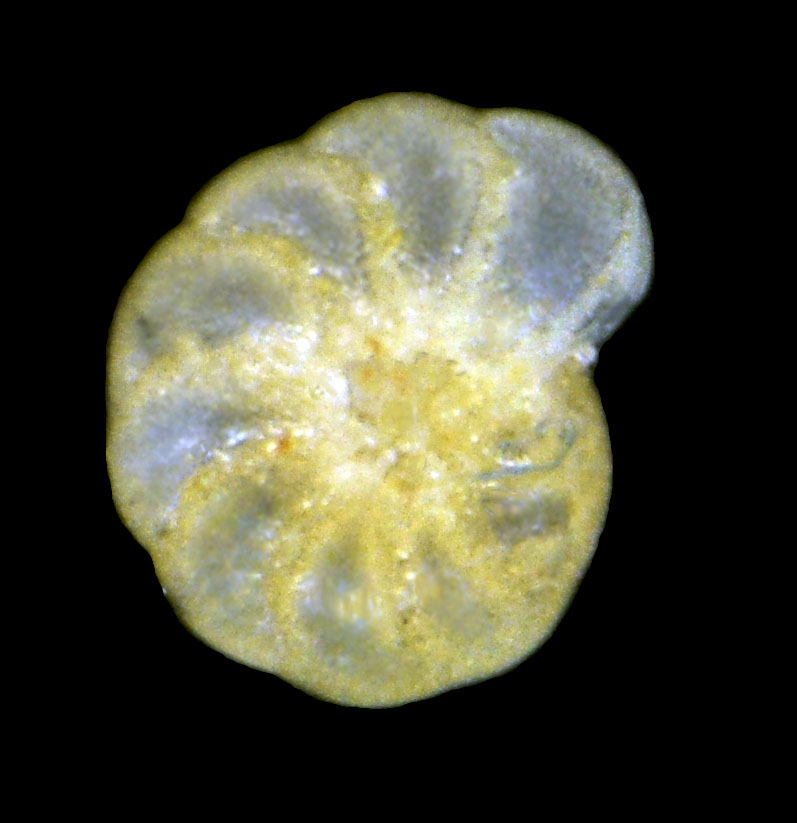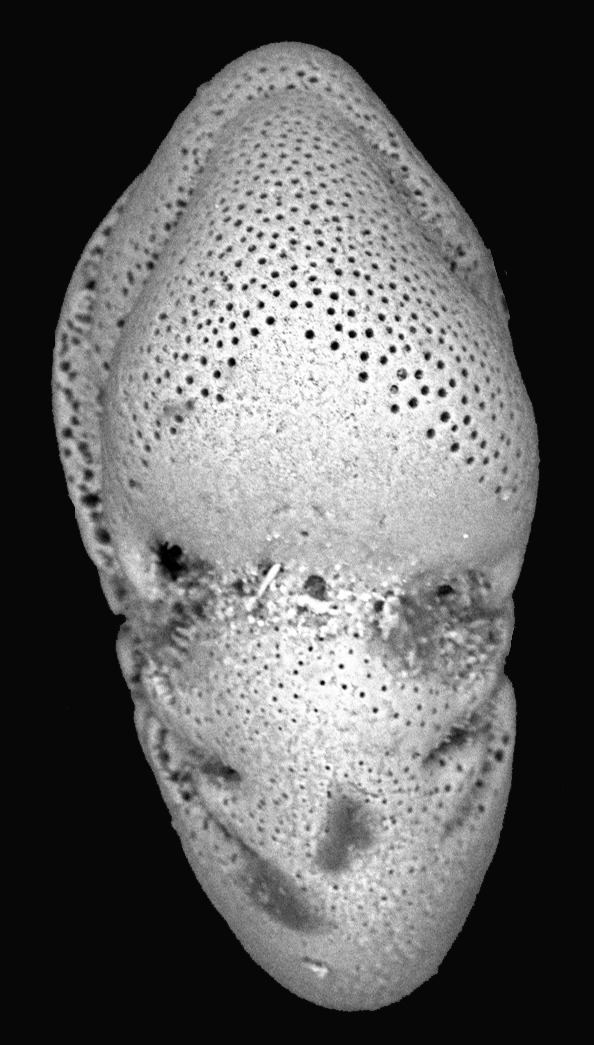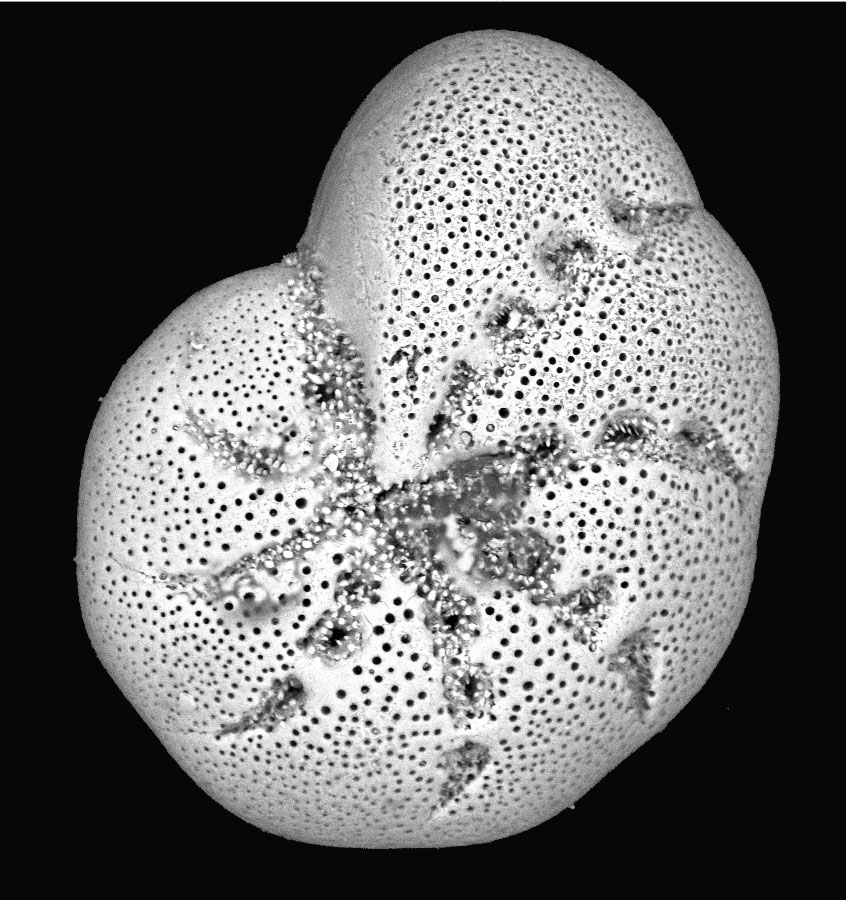Genus – Cribroelphidium
Genus Cribroelphidium Cushman and Brönnimann, 1948
Cribroelphidium Cushman and Brönnimann, 1948; emend Voloshinova, 1958
Original Description: Test similar to Elphidium but with the apertural face with a series of supplementary apertures consisting of small round openings with, or without, raised borders in the apertural face. Type species is Cribroelphidium vadescens Cushman and Brönnimann, 1948.
Voloshinova (1958) noted that the genus was erected on the characteristic of a cribrate aperture, however not only the character of the aperture differentiates it from the genus Elphidium, but also the absence of retral processes, which makes Cribroelphidium close to Elphidiella.
Emended description (translated, Ellis and Messina catalogue, no. 53187) in part: Test involute, more or less laterally compressed with broad or narrow peripheral margin, usually without a keel. The final whorl has six to twelve chambers, rarely up to twenty. Septal sutures more or less depressed (not raised), with rather distinct septal pits and short processes frequently not extending to the outer limits of the sutures.
The canal system consists of two spiral canals, from which extend umbilical canals, opening in the umbilical region, and interseptal meridional canals; the latter communicate with the outside by means of short, thick external processes frequently with massive walls, probably opening in the final chamber, subsequently overgrown.
The structure of the foramina (aperture) of Cribroelphidium may be subdivided into two types. The first type is characterized by a row of openings at the base of the septa, in most specimens with supplementary openings on the septa. The second type of foramina is characterized by a short slit at the base of the septa. In some species it remains throughout the extent of the ontogenetic development of the test, but in most species cribrate foramina are developed in the later stage. Canal system and microstructure of wall uniform in both groups with different foramina.
Cribroelphidium excavatum (Terquem, 1875)
Polystoma excavata Terquem, 1875, p. 20, pl. 2, figs. 2a, b.
Elphidium excavatum (Terquem, 1875); McGann, 2007, p. 66, pl. 10, fig. FF.
Cribroelphidium excavatum (Terquem, 1875) Patterson, Burbidge and Luternauer, 1998, p. 22, pl. 25, figs. 4, 5; pl. 26, figs. 1, 2; Vázquez Riveiros and Patterson, 2008, Figs 14.1-14.5.
Polystoma striatopunctata (Fitchel and Moll) var. selseyensis Heron-Allan and Earland, 1911, p. 695, pl. 21, fig. 2.
Elphidium selseyense (Terquem, 1875)
Elphidium incertum var. clavatum Cushman, 1930, p. 20, pl. 7, fig. 10; Cushman, 1948, p. 57, pl. 6, fig. 8; Phleger 1952, p. 83, pl. 14, fig. 7.
Elphidium clavatum Cushman emend. Loeblich and Tappan, 1953, p. 9-102; Lagoe, 1979, p. 261, pl. 1, figs. 3, 5, 6.
Remarks: A most abundant calcareous foraminifer in cold-water areas (temperatures below 2°C) on the Arctic shelves; inhabits all sediment types; has a complex pattern of distribution; often dominates foraminiferal assemblages in extreme environments, such as low salinities, turbid waters, and low food supply, including sites proximal to tidewater glaciers. Morphology varies, possibly because of complex ecology, which has promoted the discrimination of several species by some authors (Gudina & Levtchuk, 1989).
The molecular phylogeny of the family Elphidiidae (Pillet at al., 2013) provided a strongly supported clade of Elphidium excavatum and Elphidium excavatum clavatum. McGann (2007) in her compendium of benthic foraminifera from California and Oregon combined the subspecies selseyensis, clavatum, and lidoensis with the nominal E. excavatum.
Distribution: This is one of the most common species in Puget Sound waters and the test morphology is very variable. In this study there is no distributional pattern separating the subspecies and they been considered as one species.



